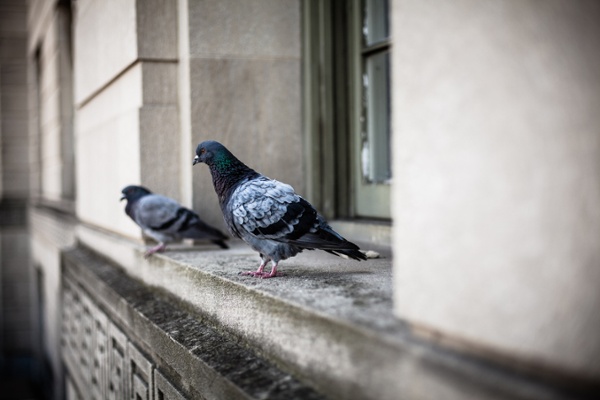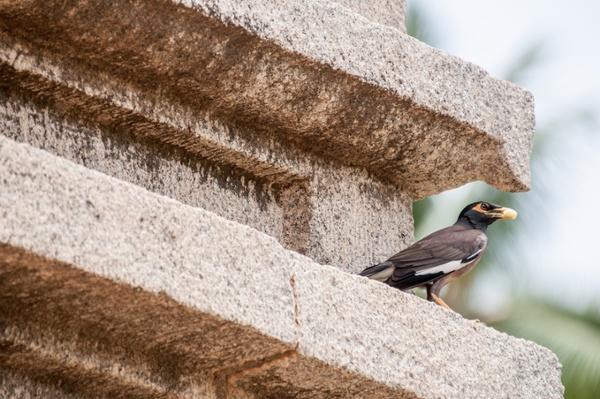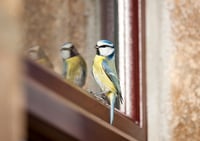
There is no doubt that a lot of people enjoy birds and other wildlife. Some feed them in the park. Others hang up birdhouses and feeders in their backyards. That is all fine and good. But while they may be enjoyable to watch and hear, birds can also be a problem. They can harbor and transmit more than 50 diseases and parasitic organisms, some of which can be fatal. The acidity in bird droppings can also damage almost every type of building material from wood and stone to marble and steel. Today, there are various products available to help defend homes and public buildings. But when developing new constructions, one should first consider bird control with preventative architecture.
Where Birds Like to Nest and Roost
The best way to repel birds is to make the site less attractive to them. It is important to understand a little bird psychology to dissuade them. In other words, think like a bird.
Birds like to be high. They love ledges. They like safe roosting spots that let them see their surroundings. Their ideal ledges include decorative elements and knee walls. Where else do birds like to hang out? Popular choices include along covered overhangs, at the entrance of ductwork, and under heating/air conditioning units, according to Food Safety Tech.
Birds also like to be close to water and food sources. They enjoy fountains, ponds, and a variety of trees, especially fruit trees. Unfortunately, trash container storage can also be welcoming, especially for scavengers such as gulls. Also, consider that birds may look for warmth near light fixtures and other electrical items.
Design Elements With Bird Control in Mind
Taking into account the aforementioned areas where birds like to roost and nest allows architects and draftsmen to avoid some elements that may also be inviting to birds. Avoiding wide comfortable nesting and roosting spots, whenever possible, are key components for bird control using preventative architecture.
Of course, you need to retain what is aesthetically pleasing to the human eye. You want to maintain the initial inspiration and look to the design while detracting the appeal to wildlife. You also need to adhere to any local, state, or federal humane operation regulations.
Where ledges and rafters cannot be reduced in size, other measures can be taken. Bird wire, netting, and spikes all provide humane yet undesirable landing and roosting deterrents for birds. We are not trying to hurt the wildlife, just discourage them from using the building as a home. These and other quality deterrence measures can be easily added to building specifications.
Measures of Bird Control With Preventative Architecture and Building Add-Ons
There are a variety of products on the market today to assist in bird control measures for new building sites and older constructions. Consider your location and what type of birds are most prevalent to narrow down your options.
Bird Netting
Bird netting is one of the most effective deterrents for the majority of pest birds. From sparrows to pigeons and gulls, bird netting is available in a variety of meshes for smaller breeds or larger ones. Bird netting can cover various parts of building exteriors, including over heating and air conditioning units. When including ideas for bird control with preventative architecture in your plans, be aware of the target species for sizing. Also, while netting is considered the best available measure for control and is the most versatile option, it can be expensive.
Ledge Exclusion
A ledge exclusion, or BirdSlide®, offers a more discrete alternative to bird netting. Available in a standard gray coloration, it can also be painted to match the exterior of any building. Birds of most sizes cannot land on its protective surface, so it acts as a long-lasting physical and visual deterrent. Businesses can install BirdSlide® along ledges, beams, and eaves.
Bird Wire
Bird wire can be a useful combatant against larger birds. The spring-tension wire system consists of stainless-steel posts that are taped or epoxied to the surface area. A thin stainless-steel wire stretches between the posts. After landing, pigeons, and larger birds, will not be able to fold their wings, discouraging them from remaining.
Bird Spikes
Spikes sound more severe than they really are. Usually made of stainless steel, this product is another measure that works well for deterring pigeons. The bird spikes attach to ledges, making them a more difficult landing area. Like with bird wire, if a pigeon does land, it will have trouble closing its wings. The spikes are metal or plastic rods that point upward.
Bird spikes are available in a variety of widths. They are not only effective on ledges — they can also be used for bird control atop signs, gutters, parapets, and more. Care must be given in incorporating spikes into architectural plans to avoid detraction from the overall aesthetics of the building.
Shock Tracks
Shock tracks are another effective bird prevention measure. These emit a mild shock to a bird when it encounters the strip. Shock track systems are low profile and are hardly noticeable along the building's architecture, making them a good alternative for use where other measures cannot. A shock track can be installed with the curves up or down to blend into the architectural design. They can go along roof peaks, beams, parapets, and ledges. All they need is access to a power source. Shock tracks are effective against large and smaller birds.
The Importance of Bird Control With Preventative Architecture

While bird control measures can be applied to existing buildings and are of great assistance to preserving older constructions, designing architecture with bird control in mind is a way to combat the issue before any problems arise. Consideration should be given during the design phase to avoid or modify features attractive to birds from the onset.
Bird droppings are not only unappealing; they can be a health hazard by harboring transmissible diseases such as West Nile virus, psittacosis, cryptococcosis, and histoplasmosis. The excrement can also be slippery and hazardous on walkways. This, coupled with the building damage they can cause, makes bird prevention an important consideration in the preplanning and design phase of any type of architecture. If you are in need of product ideas or need help with specs for design, please give us a call today. Bird control is our specialty.
About Bird Barrier
Bird Barrier is a leader in innovative technology designed to prevent birds from landing, roosting or nesting. We specialize in urban bird control to remove birds humanely and effectively. Our website, birdbarrier.com, hosts a wealth of content to help people understand and identify bird control solutions for various problems with pest birds. Please contact us if you need help with a bird related problem. You may also benefit from our free guide, Bird Deterrents: The Complete Guide.






